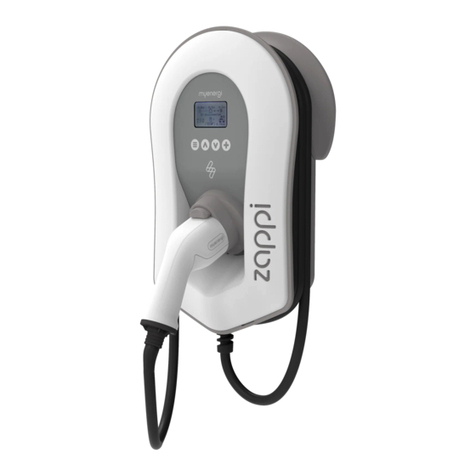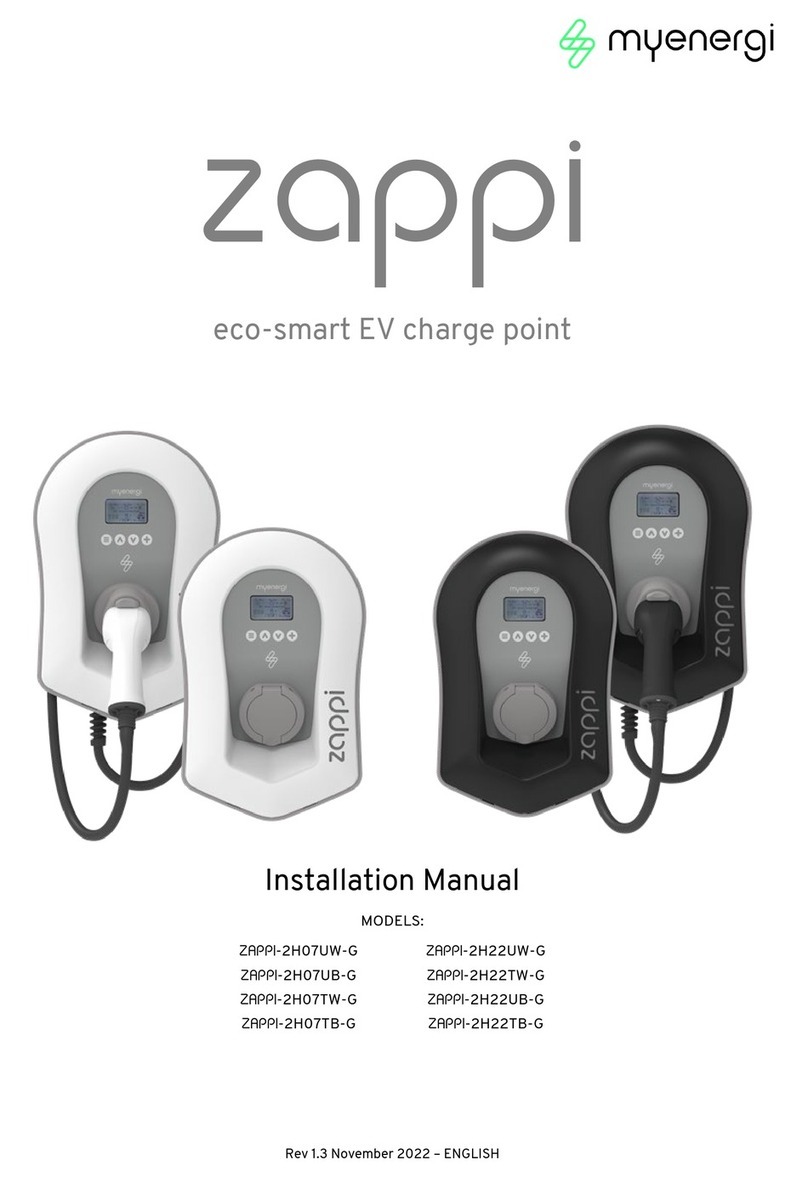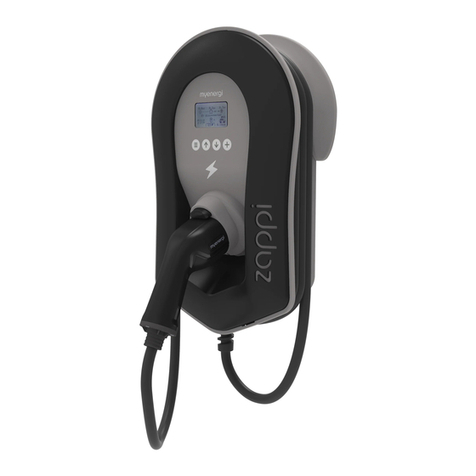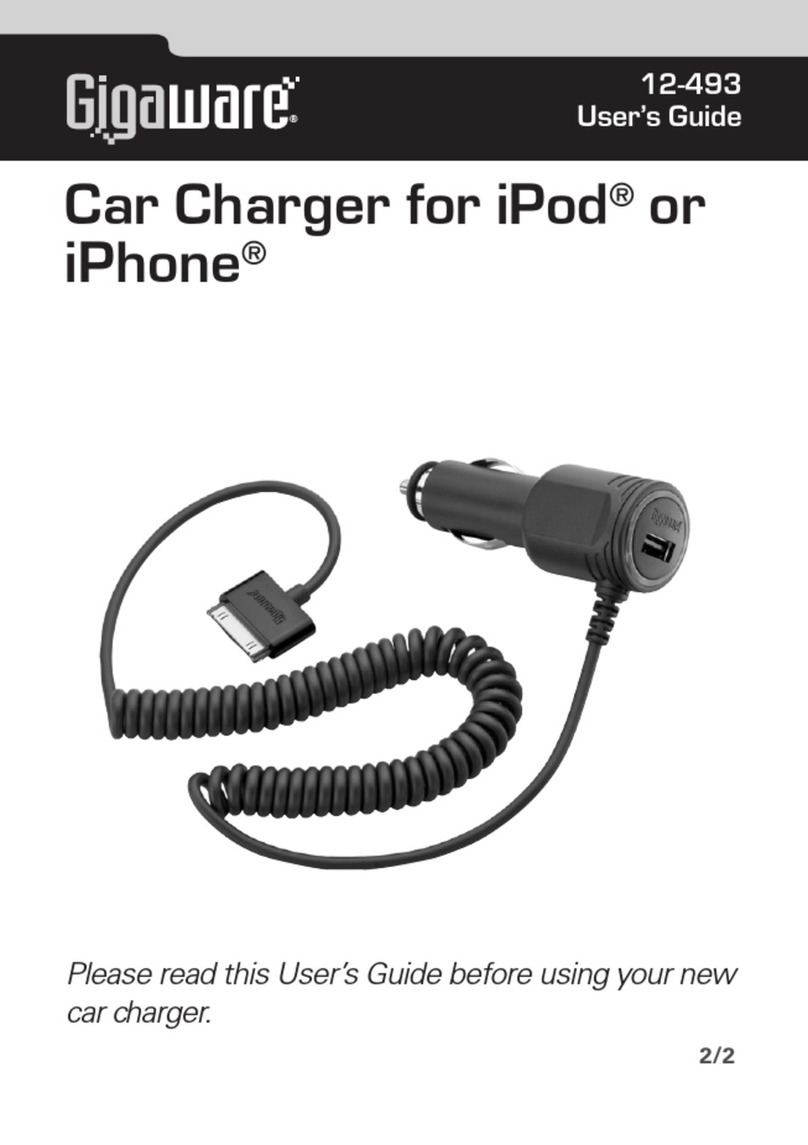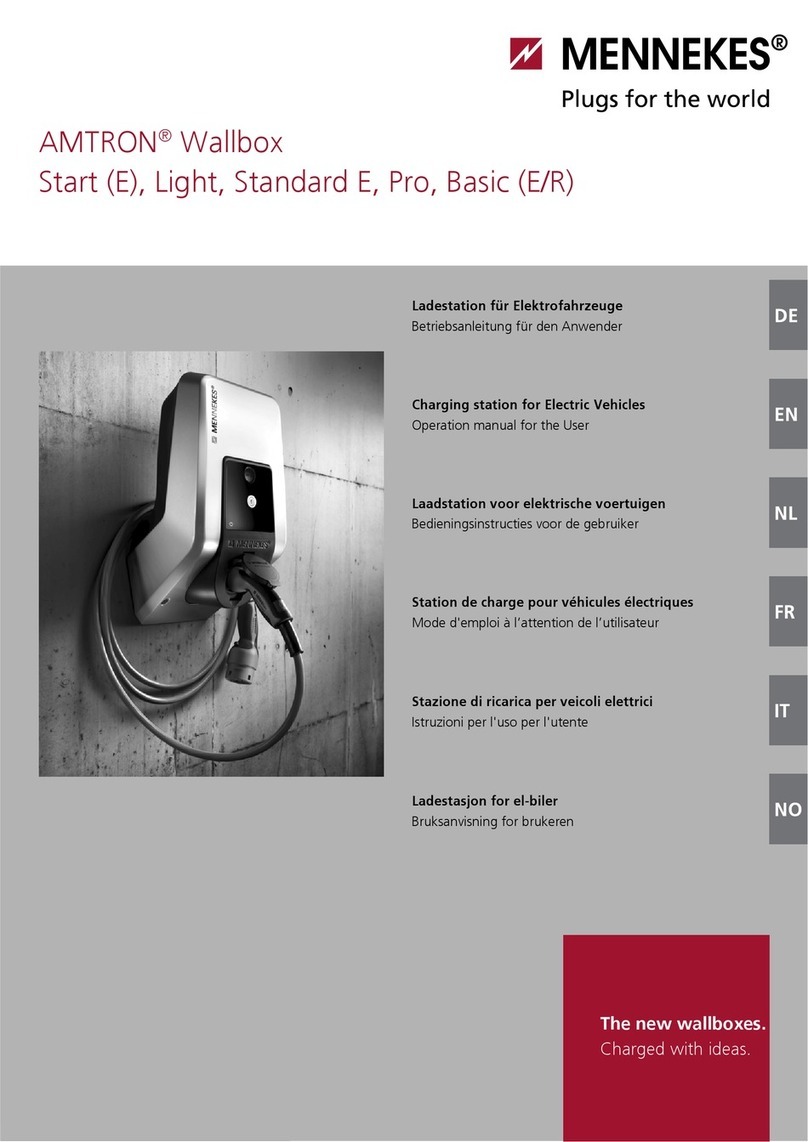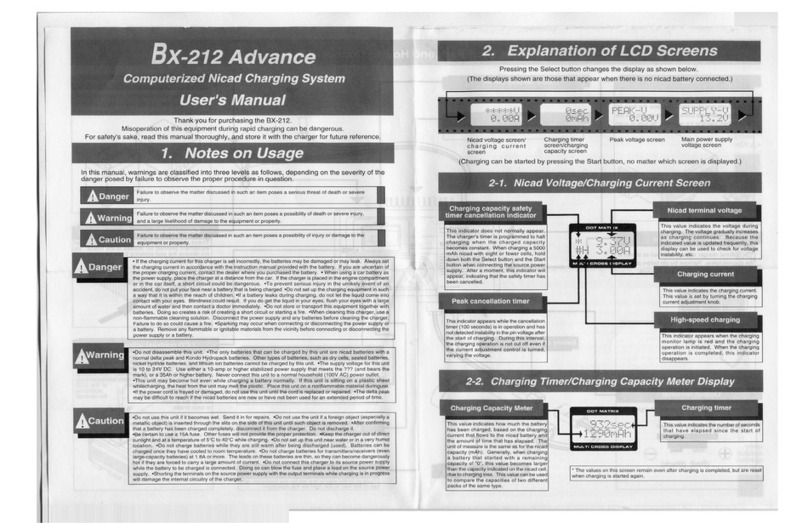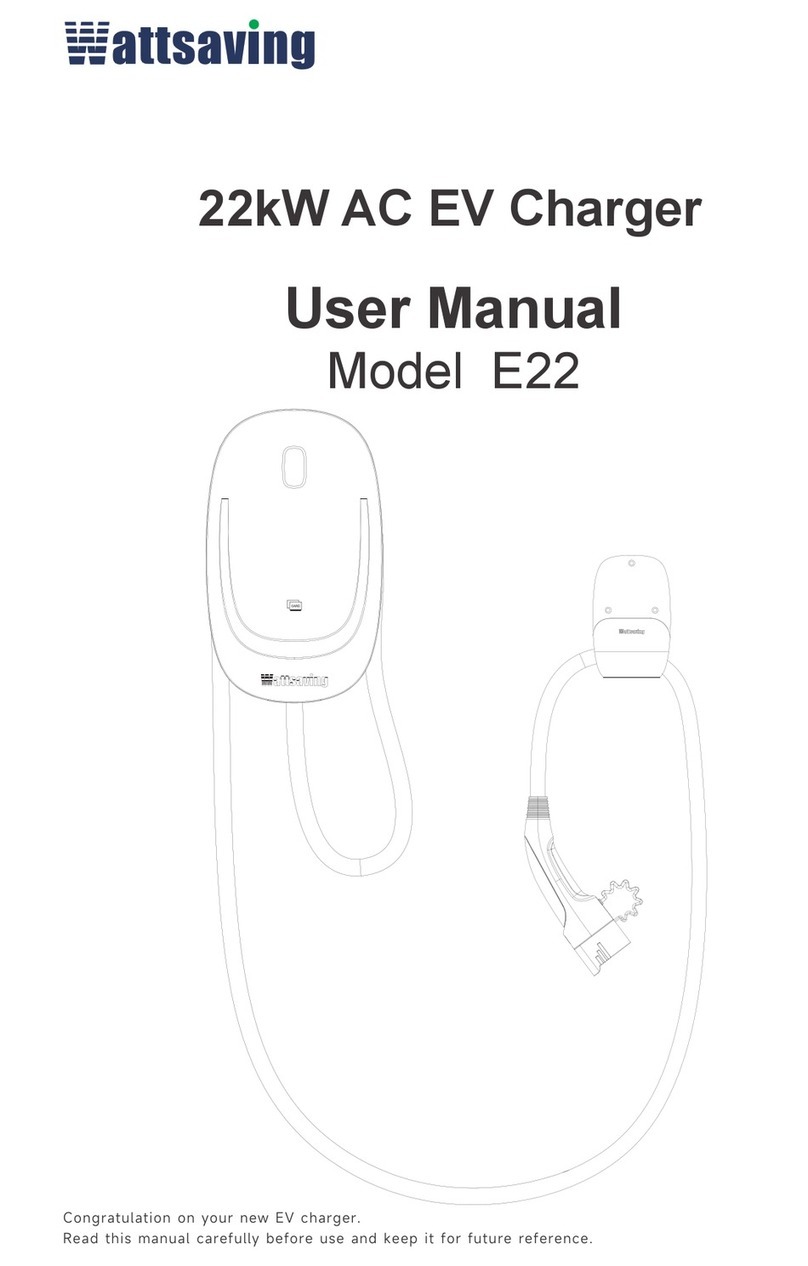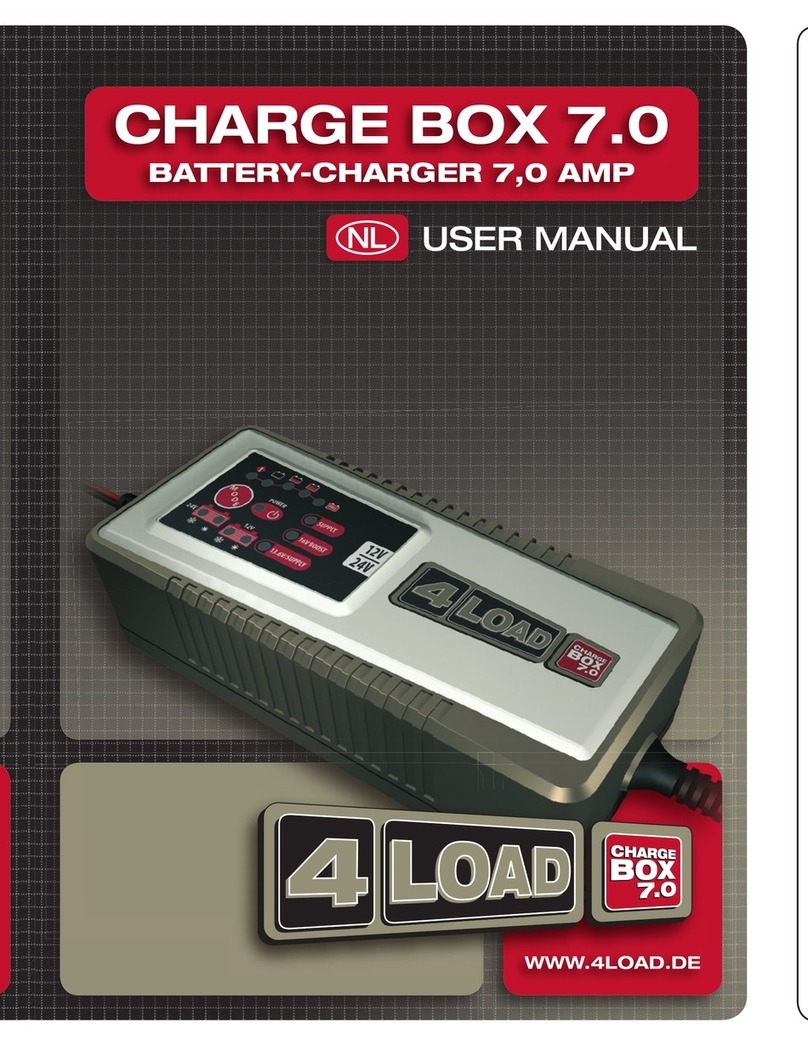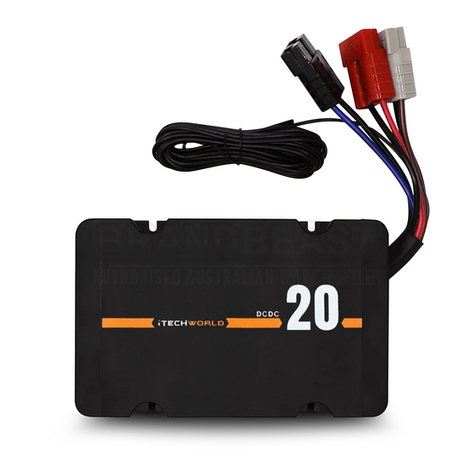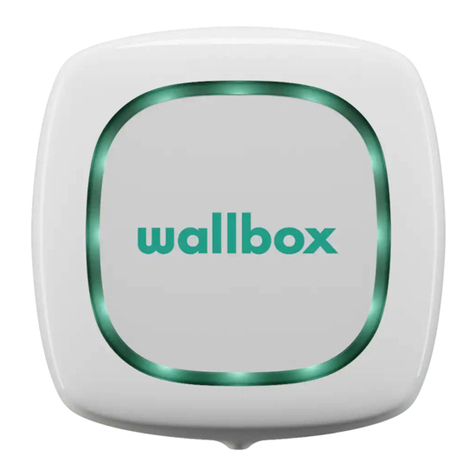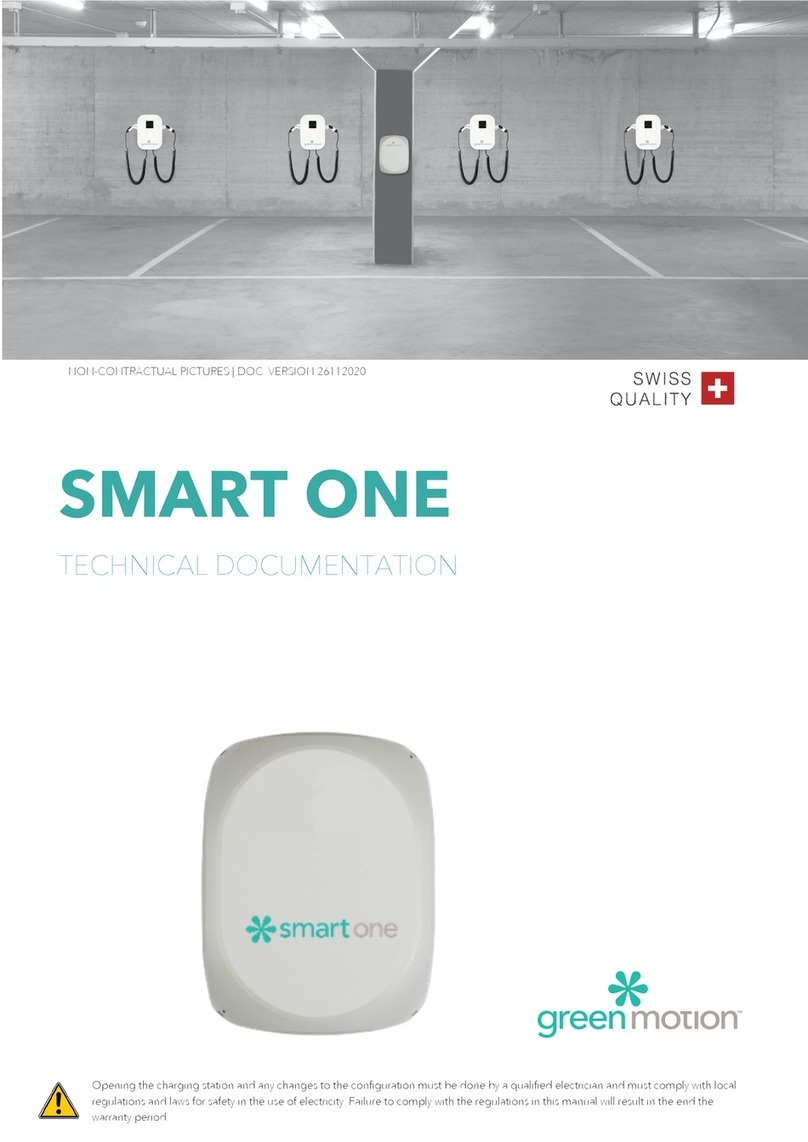Myenergi ZAPPI-2H07UW User manual

The Electric Vehicles (Smart Charge Points) Regulations 2021 –Technical File
1
Technical File
The Electric Vehicles (Smart Charge Points) Regulations 2021
Contents
Description of the smart charge point.................................................................................................................. 2
Operating manual........................................................................................................................................................ 3
Technical solutions implemented to meet the requirements of the Regulations................................... 4
Smart functionality ..................................................................................................................................................... 4
Electricity supplier interoperability....................................................................................................................... 6
Loss of communications network access............................................................................................................. 6
Safety ...............................................................................................................................................................................7
Measuring system.........................................................................................................................................................7
Off-peak charging........................................................................................................................................................ 9
Randomised delay......................................................................................................................................................10
Security..........................................................................................................................................................................12
Provision of information (Appendix).....................................................................................................................18
This document is the technical file for the following charge point:
Charge point make:
myenergi
Charge point model:
ZAPPI-2H07UW
ZAPPI-2H07UB
ZAPPI-2H07TW
ZAPPI-2H07TB
ZAPPI-2H22UW
ZAPPI-2H22TW
ZAPPI-2H22UB
ZAPPI-2H22TB
ZAPPI-2H07UW-G
ZAPPI-2H07UB-G
ZAPPI-2H07TW-G
ZAPPI-2H07TB-G
ZAPPI-2H22UW-G
ZAPPI-2H22TW-G

The Electric Vehicles (Smart Charge Points) Regulations 2021 –Technical File
2
ZAPPI-2H22UB-G
ZAPPI-2H22TB-G
Software version at point of
sale:
From V4.300
Seller:
Person responsible for compliance
with the Regulations
myenergi Ltd, Pioneer Business Park, Faraday Way, Stalling-
borough, Grimsby, DN41 8FF, UK
Manufacturer(s):
If different to seller
N/A
Last update to technical file:
20/12/2022
Description of the smart charge point
This page outlines the general description of the charge point, including a description of its design
manufacture, and operation.
is a MODE 3 electric vehicle charger, designed for use in residential applications. It is
manufactured in 16 model variations, for the UK market:
Model No.
Rating
Connector
Colour
ZAPPI-2H07UW
7kW
Untethered
White
ZAPPI-2H07UB
7kW
Untethered
Black
ZAPPI-2H07TW
7kW
Tethered
White
ZAPPI-2H07TB
7kW
Tethered
Black
ZAPPI-2H22UW
22kW (3 Phase)
Untethered
White
ZAPPI-2H22TW
22kW (3 Phase)
Tethered
White
ZAPPI-2H22UB
22kW (3 Phase)
Untethered
Black
ZAPPI-2H22TB
22kW (3 Phase)
Tethered
Black
ZAPPI-2H07UW-G
7kW
Untethered
White
ZAPPI-2H07UB-G
7kW
Untethered
Black
ZAPPI-2H07TW-G
7kW
Tethered
White
ZAPPI-2H07TB-G
7kW
Tethered
Black
ZAPPI-2H22UW-G
22kW (3 Phase)
Untethered
White
ZAPPI-2H22TW-G
22kW (3 Phase)
Tethered
White
ZAPPI-2H22UB-G
22kW (3 Phase)
Untethered
Black
ZAPPI-2H22TB-G
22kW (3 Phase)
Tethered
Black
‘-G’ variants of include a built-in tamper detection device. Non ‘-G’ variants require a ret-
rofit kit to be installed on or after 30th December 2022, to be compliant with Schedule 1 (Secu-
rity) of the Smart Charge Point Regulations.
has a built-in user interface with an LCD display, which can be used in conjunction with
the and to control the charge point.

The Electric Vehicles (Smart Charge Points) Regulations 2021 –Technical File
3
is part of range of eco-smart products, which aim to maximise the use of self-
generated electricity, from solar or wind power (although there is no requirement to have your
own generation to use ). It can be used standalone, or in conjunction with other myenergi
devices.
is designed at myenergi’s facility in Grimsby and manufactured in the United Kingdom.
is designed and tested in accordance with the Product Standard IEC EN 61851-1:2019.
complies with the following standards:
LVD 2014/35/EU, EMC 2014/30/EU, EN 62196-2:2017, ROHS 2011/65/EU, CE Certified, EN
61851-1:2019
A full technical specification can be found at: https://myenergi.com/wp-content/up-
loads/2022/06/ datasheetweb-compressed-2-2.pdf
Operating manual
Copy of operating manual as
available at point of sale can be
found (cross as appropriate):
Attached to this document (hard copy)
Attached to this document as a digital file (soft copy)
X
Available online via hyperlink (soft copy)
Link if available online:
Current Version of manual: https://myenergi.com/zappi-
support
Earlier versions: https://myenergi.com/installers-cen-
tre/download-centre/
Version of file received at point
of sale if available online:
Non -G Variants: Rev 2.1.9
-G Varients : Rev 1.5

The Electric Vehicles (Smart Charge Points) Regulations 2021 –Technical File
4
Technical solutions implemented to meet the require-
ments of the Regulations
Smart functionality
Requirement
Technical solution adopted to meet the re-
quirement
Charge point is able to send and re-
ceive information via a communica-
tions network
is connected to the internet through your home
broadband connection. Depending on your installation
this can be achieved by:
1. Using onboard WiFi or Ethernet to con-
nect to your home broadband router.
2. The , which communicates be-
tween , other devices and your
home broadband router. (This is the case if you
have a physical ).
3. By using another device in your
home, which acts as a virtual hub for all
devices in your property.
The information flow between and is
bidirectional, allowing to send information to
servers and servers to send com-
mands to .
Charge point is able to respond to sig-
nals or other information received by
it by:
•Increasing or decreasing the rate
of electricity flowing through the
charge point
•Changing the time at which elec-
tricity flows through the charge
point
Your can communicate with servers
over an internet connection. Your charge point is capa-
ble of receiving commands from systems
to increase or decrease the electricity flowing through
the charge point. Commands can also be used for ad-
justing the scheduled charging periods (Boosts). These
commands also include the ability to remotely start or
stop charging.
can be controlled by the which
sends commands servers over an internet
connection.
Where your is enrolled in a Demand Side Re-
sponse service (DSR) is able to interpret com-
mands from the server, to adjust its charging
behaviour.
Charge point is capable of using this
functionality to provide demand side
Your charge point can receive commands from
servers, which allow it to take part in demand
side response services (DSR).

The Electric Vehicles (Smart Charge Points) Regulations 2021 –Technical File
5
response services, including response
DSR services
Demand side response services involve signals being
sent to your charger to increase or decrease the flow of
electricity, through the charger, in response to changes
on the electricity grid.
These services include load reduction (reducing the
amount of electricity flowing through the charge point)
and frequency response services. (Increasing or de-
creasing electricity flowing through the charge point, in
response to the frequency of the electricity grid).
DSR is an optional feature, by default you will not be
opted into DSR Services. You can opt into, or out of
DSR Services in the . The feature is cur-
rently in Beta and may not be available to all users,
however this does not affect your charger's ability to
take part in DSR services in the future.
You can also provide your electricity tariff information
in the and will schedule a
charging session based on this information, and the
time your vehicle needs to be ready by. Pricing can be
set for each 30 minute time period.
Charge point has at least one user in-
terface, incorporated in the charge
point or otherwise made available to
the owner
offers three (3) user interfaces for use with
the charger:
•has a built-in user interface (LCD Screen)
with physical buttons, which allows the adjust-
ment of charging settings directly on the de-
vice.
•The which is available for iOS
and Android devices.
•The which is a web por-
tal that can be accessed from a web browser on
your phone, tablet, or computer. https://myac-
count.myenergi.com
The can be used for monitoring and
controlling charging sessions. The al-
lows the following functionality, with regards to the
smart charging regulations:
•Ability to remotely start and stop charging ses-
sions.
•Ability to override randomised delay.
•Ability to change or remove the default off-peak
charging schedule.

The Electric Vehicles (Smart Charge Points) Regulations 2021 –Technical File
6
•Ability to reinstate the off-peak charging sched-
ule if it has been removed.
The can be used to download up
to 13 months of charging history for your . Charg-
ing history can be viewed on a line-by-line basis and
exported in CSV or Excel file types.
Electricity supplier interoperability
Requirement
Technical solution adopted to meet the re-
quirement
Charge point is configured such that
is will not cease to have smart func-
tionality if the owner changes their
electricity supplier
works with all UK energy providers - your charge
point will work regardless of your energy provider. If
you move suppliers your charge point will be unaf-
fected, and your smart charging settings will remain
the same.
If you use the optional features, such as match-
ing your charging schedule to your electricity tariff, you
can update your energy tariff in the portal.
https://myaccount.myenergi.com
Loss of communications network access
Requirement
Technical solution adopted to meet the re-
quirement
Charge point is configured such
that, in the event it ceases to be
connected to a communications
network, it will remain capable of
charging an electric vehicle
is designed to work without an internet connec-
tion. However, we recommend keeping your con-
nected to the internet, so you can benefit from additional
features and firmware updates.
has a built-in user interface (screen and buttons),
which can be used to start and stop charging, as well as
adjusting charging settings, without the need for an in-
ternet connection. Features such as load management,
use devices that are physically installed in your home and
do not require the internet to operate. These features are
usually hardwired or communicate over a local radio net-
work within your home.
If there is a problem with the internet connection,
will continue to operate and can be used to charge an EV
using the local controls if needed.
stores charging history on the device for a period
of up to 7 days, on re-establishing a connection to the
myenergi servers, will attempt to upload charging

The Electric Vehicles (Smart Charge Points) Regulations 2021 –Technical File
7
history, that happened during the communications fail-
ure, ensuring charging data is not lost.
Safety
Requirement
Technical solution adopted to meet the re-
quirement
Charge point is configured such that it
will not allow a relevant person to
carry out a specified operation where
to do so would or may result in a risk
to the health or safety of persons.
“Relevant persons” means the owner,
or an end-user of the relevant charge
point who is not the owner.
“Specified operation” means:
•Overriding the default mode of
charging during the default charg-
ing hours
•Overriding the provision of demand
side response services
•Overriding the random delay
is designed and tested in accordance with the
Product Standard IEC EN 61851-1:2019.
Once installed and commissioned it will operate safely
in any of the modes provided. Changing the mode,
changing the default charging hours, overriding the
provision of demand response services, or overriding
the random delay can all be done safely by the end
user, from the built-in display or by the app.
Should identify a situation that poses a safety
risk, will enter a fault mode. The fault mode is in-
dicated by a red logo on the front of the de-
vice and a fault message will be displayed on the
screen.
The user will be required to carry out a reset proce-
dure, after they have investigated and rectified the
fault. This reset procedure requires the user to physi-
cally press and hold a button on the device, before the
can be used for charging an electric vehicle
again. In fault mode, the ability to override the ‘speci-
fied operations’ is not possible, and charging will be
stopped.
will also ensure that installation limits, that have
been set at your property, (such as a grid limit) are not
exceeded by carrying out a specified operation. In the
event that they are, will prioritise the installation
limits over the ‘specified operations’
Measuring system
Requirement
Technical solution adopted to meet the re-
quirement
On each occasion it is used, the
charge point measures or calculates:
includes a metering circuit with an accuracy that
is equivalent to EN 50470-1/3 Class B (1%). :

The Electric Vehicles (Smart Charge Points) Regulations 2021 –Technical File
8
•The electricity it has imported or
exported (in watt-hours or kilo-
watt-hours)
•The amount of time for which it is
importing or exporting electricity
0.25-5(32A)
eCTs : 0.75-15(100A)
Energy (kWh) delivered to the EV is displayed on the
and communicated to the server, so
that it can be viewed by the end user in the charge his-
tory, in their online account: https://myaccount.my-
energi.com
The charging history also provides details of when the
vehicle was plugged in and out, and the duration that
electricity was flowing through the charge point.
You can also view your charging history on the
user interface.
The charge point is configured such
that the owner can view the infor-
mation in reference to:
•Any occasion on which it was used
to import or export electricity
within the past 12 months
•Any month within the past 12
months
•The entirety of the last 12-month
period
account (https://myaccount.myenergi.com)
will display charging history to the end user, detailing
the following for each charging session:
1. Plugged in / Unplugged: Time and Date
2. Number of kWh delivered
3. Active time charging (Amount of time that electricity
was flowing through the charge point).
These logs will show historical data, for a period of 13
months beginning from 30th June 2022. Customers
can view and export charging data on a line-by-line ba-
sis. The charging history will also be filterable to a
weekly, monthly or a user defined time period, includ-
ing the last 12 month period.
The charge point is configured such
that it can:
•On each occasion it is used, meas-
ure or calculate every one second
the electrical power it has im-
ported or exported (in watts or kil-
owatts)
•Provide this information via a com-
munications network
measures the energy delivered to the electric
vehicle every second, This is achieved by a metering
circuit which meets the accuracy requirements of the
Measuring Instrument Regulations. (EN 50470-1/3
Class B).
Energy (kWh) delivered to the EV is displayed on the
screen and communicated to the
server using the end user’s home broadband connec-
tion.
The charge point is configured such
that:
includes a meter circuit which measures energy
delivered to the vehicle with an accuracy of 1%

The Electric Vehicles (Smart Charge Points) Regulations 2021 –Technical File
9
•The figures measured or calculated
are accurate to within 10% of the
actual figure
•Any inaccuracies are not system-
atic
includes a metering circuit which meets the ac-
curacy requirements of the Measuring Instrument Reg-
ulations. (EN 50470-1/3 Class B)
Off-peak charging
Requirement
Technical solution adopted to meet the re-
quirement
The charge point:
•Has pre-set default charging hours
which are outside of peak hours
•Offers the owner the opportunity to
accept, remove, or change the de-
fault charging hours on first use
•Offers the owner the ability to
change, remove, or set default
charging hours any time after first
use
Unless the charge point is sold with a
DSR agreement, configured to comply
with the requirements of this agree-
ment, and details of the agreement
are included in the statement of com-
pliance.
During first setup, will enter an installation wiz-
ard, using built-in display and buttons. The wiz-
ard will ask your installer a series of questions to un-
derstand if is being installed in a scenario, where
smart charging regulations apply.
Based on the answers, will automatically be con-
figured to charge between 12:00am (Midnight) and
08:00am.
Your will also be configured in ECO+ mode by
default, in this mode your charger will only charge in
the following two scenarios:
1. During the schedule that you set on or in
the app. If you did not change the default
schedule, this will be between 12am (Midnight)
and 8am.
2. When surplus self-generation (wind or solar) is
available.
Users can (at any time):
1. Do nothing, and accept the default off-peak
charging period
2. Change the off-peak charging period in the
or on the itself by going to
the ‘charge settings’ menu
3. Remove the off-peak charging schedule, by go-
ing to the ‘charge settings’ menu on or
‘scheduled boost’ section in the .
4. Change the default mode of in the
charge settings menu on . If the default
mode is changed to ‘Fast’, will default to
this charging mode each time a vehicle is
plugged in, and will ignore any schedules set.

The Electric Vehicles (Smart Charge Points) Regulations 2021 –Technical File
10
5. Reinstate the default off-peak charging hours in
the app. By default, a timed boost will
suggest the hours of 12am (midnight) and 8am,
Monday to Friday, as the schedule. This sched-
ule can be changed by the user to meet their re-
quirements.
The charge point is configured:
•To charge a vehicle during the de-
fault charging hours (if any), unless
the owner overrides the default
mode of charging during this time
•Such that the owner can override
the provision of demand side re-
sponse services
will be configured in ECO+ mode by default. In
this mode will only charge during your set sched-
ule, or when surplus self-generated solar or wind is
available. The user can override the default charging
period by switching to ‘Fast mode,’ using the buttons
on , or by setting a manual boost in the
Users can change the default mode of in the
charge settings menu on .
Customers can override and opt in /out of DSR services
in the
Randomised delay
Requirement
Technical solution adopted to meet the re-
quirement
The charge point is configured such
that it must operate, at each relevant
time, with a delay of random duration
up to 600 seconds, determined to the
nearest second each time.
has a randomised delay function, which is built
into the device. This delay will activate if the electricity
flowing through the charge point, from the electricity
grid, is increased or decreased. will calculate a
delay to the nearest second, using a random number
generator when:
1. Your reaches the start of your scheduled
charging time, where electricity is due to start
flowing through the charge point.
2. Your reaches the end of your scheduled
charging time.
3. When plugging in using fast mode.

The Electric Vehicles (Smart Charge Points) Regulations 2021 –Technical File
11
The delay calculated can be up to 600 seconds (10
minutes) The delay is purely random and will differ
each time. The delay in seconds is displayed on the
screen.
Randomised delay will not be active in scenarios where
is decreasing the electricity flowing through the
charge point, in order to maintain installation limits set
at your property. (Such as a grid limit)
The charge point is configured such
that the maximum duration of this de-
lay can be remotely increased to up to
1800 seconds if required.
Your is capable of firmware updates using its in-
ternet connection. Should the UK Government decide
to increase the delay in the future, your device will be
issued a firmware update to increase the maximum
length of the randomised delay.
The charge point is configured such
that the random delay will not operate
where:
•The owner or another relevant
end-user has manually overridden
it
•An equivalent random delay has al-
ready been applied to the opera-
tion of the relevant charge point
•The charge point is responding to a
response DSR service
Randomised Delay can be overridden by pressing the
‘+’ button on the . This will cancel the delay and
the vehicle will start or stop charging from the electric-
ity grid immediately. The delay at the start of a charg-
ing session can also be overridden by switching to fast
mode from ECO or ECO+, after the electric vehicle has
been plugged in.
The randomised delay can also be overridden in the
. An in-app notification will appear when
a randomised delay is active. The user can override this
delay, and start charging immediately, by pressing the
‘charge now’ button on the notification.
A user can override randomised delay, at the end of
their charging session in the app, by press-
ing the ‘end now’ button
When responding to DSR services, randomised delay
does not apply.

The Electric Vehicles (Smart Charge Points) Regulations 2021 –Technical File
12
Security
At we’re passionate about ensuring that your is secure and meets industry best
practice, to protect against cyber-attacks. This part of our technical file explains the technical
measures we have implemented in order to protect you, your home, and the energy grid from cy-
bercrime. We appreciate that this can get technical, so for each section we have detailed the tech-
nical implementation and what this means for you in plain English.
Requirement
Technical solution adopted to meet the re-
quirement
General principles
The charge point is designed, manu-
factured, and configured to provide
appropriate protection:
•Against the risk of harm to, or dis-
ruption of the electricity system
•Against the risk of harm to, or dis-
ruption of, the charge point
•For the personal data of the owner
and any other end-user of the rele-
vant charge point
Your is designed to protect you, your data, and
the energy grid from harm.
Your has several security features which are de-
signed to deter local or remote attacks on your .
The following principles have been applied to protect
you:
•We store sensitive and personal data in a secure
manner and ensure appropriate access rights
are in place. We store data in line with industry
best practice. Sensitive user credentials such as
passwords are stored using strong, industry
standard hashing algorithms.
•You can remove your data from our services at
any time in accordance with our Privacy Policy:
https://myenergi.com/terms-and-condi-
tions/privacy-policy/
•Your is designed to take necessary ac-
tion, such as to disconnect from a communica-
tions network, or suspend charging operations,
when such attacks pose a risk to you, your
home, or the electricity grid.
•If your was installed on or after 30th De-
cember 2022, it is also designed to protect
against attackers physically tampering with
your , and incorporates a monitoring and
alerting system, to detect and deter such at-
tacks.
Your is set up, so that by default such security
features are switched on.

The Electric Vehicles (Smart Charge Points) Regulations 2021 –Technical File
13
Passwords
The charge point is configured such
that where passwords are used on it:
•The password is unique to the
charge point and not derived from,
or based on, publicly available in-
formation, or is set by the owner
•The password cannot be reset to a
default password applying to both
the charge point and other charge
points
You can choose to protect your device using a 5-digit
PIN code which you must enter on . Enabling this
feature will require the 5-digit PIN code to start charg-
ing or to access the settings of the . You can turn
this feature on in the system settings. We recommend
you do this for greater protection.
Your WI-FI access point is protected by a unique
password. The WI-FI access point’s SSID (network
name) and password is randomly generated and stored
on the each time the WI-FI configuration is reset.
Neither the access point name nor the password has
any relationship to information which is publicly availa-
ble.
Your is provided with a unique Registration
Code, which is required when adding your to the
app. Once this Registration Code has been
used, it cannot be used again until the corresponding
is removed from the app.
What this means for you: It’s important that passwords
are protected; think of them like keys to your home.
Our method above means your uses a password
which is unique (not used by any other ).
Sensitive security parameters
The charge point is configured such
that:
•Security credentials stored on the
charge point are protected using
robust security measures
•Software does not use hard-coded
security credentials
Your uses cryptographic keys to encrypt data,
which are unique to your . These keys are stored
in a protected area which is resistant to tampering.
Your (depending on date of manufacture):
•Has a key provided to it before it leaves the fac-
tory.
•Gets a key after first boot using a secure, en-
crypted method.
Your does not contain any hardcoded security
credentials.

The Electric Vehicles (Smart Charge Points) Regulations 2021 –Technical File
14
It is imperative that an installer downloads the latest
updates on commissioning, to ensure compliance with
the smart charging regulations. Failure to do so may
result in non-compliance with the regulations.
What this means for you:
Using the previous analogy, think about keys you al-
ready have in your life. You wouldn’t use the same key
for your car, home, or every home in the street for that
matter! You also wouldn’t leave your key in the front
door, where it could be stolen or copied.
use keys that are unique to your ; they
don’t work on any other . We also don’t use hard-
coded security credentials –think of these like leaving
your key in the front door, it would be easy for some-
one to steal and use. We keep sensitive security keys in
protected areas of your , which are resistant to
being stolen.
Data inputs
The charge point is configured such
that:
•Data inputs are verified so that the
type and format of the data is con-
sistent with that expected for the
function
•If such data cannot be verified, it is
discarded or ignored by the charge
point in a relevant manner
Your will verify the type and pattern of data it is
expecting to receive, this may include:
•Checking the data is within a defined range
•Checking the pattern of the data is expected
•Checking that the data does not contain any es-
cape, dangerous characters, or arbitrary code,
that could result in unexpected behaviour
If your detects an unexpected input, your
is designed to handle the input as an error and the soft-
ware will safely discard of the input.
What this means for you:
Attackers might try to trick a program into behaving in
an unintended way, by providing information the
wasn’t expecting to handle. This could cause the soft-
ware to behave in an unexpected manner, or crash. To
protect against this, we validate the inputs your
receives.
Ease of use
The charge point is configured to min-
imise the inputs required from the
Your comes with a built-in setup wizard. On first
boot the will guide you or the Installer through a

The Electric Vehicles (Smart Charge Points) Regulations 2021 –Technical File
15
owner in connection with its set-up
and operation
series of questions to determine the correct configura-
tion for the installation. The user will be asked to setup
necessary features such as:
•Telling the geographic location it’s been
installed in (For the purpose of determining if
the smart charge point regulations apply)
•Connecting to a WI-FI network
•Defining if the is the first de-
vice or addition to an existing eco-
system.
•Performing a check for new firmware to ensure
your is up to date.
We have designed the wizard to include only necessary
features for operation and compliance of the .
What this means for you:
The first time you use , we’ll ask you a series of
questions to ensure your is setup in compliance
with the regulations, as quickly as possible. You can ad-
just more advance settings at a later stage. By default,
all necessary security protections are enabled.
Ease of use
The charge point is configured such
that any personal data can be deleted
from it by the owner without undue
difficulty
You can remove your personal data from the , re-
gardless of whether has a connection to the in-
ternet. This can be achieved by factory resetting your
, which will erase all charging history and PIN
codes from the , using the display and menu but-
tons on the .
To remove your data from our online systems, please
login to your online account at https://myaccount.my-
energi.com and delete your account.
What this means for you:
You are in control of your data, in accordance with our
privacy policy: https://myenergi.com/terms-and-con-
ditions/privacy-policy/ This policy sets out how we use
your data, how we store it and how long we’ll retain it. If
you choose to change your in the future, or move
home, you can securely delete your data from the
and our online services.

The Electric Vehicles (Smart Charge Points) Regulations 2021 –Technical File
16
Protection against attack
The charge point is designed and
manufactured to provide an adequate
level of protection against physical
damage to the charge point
To protect against physical damage, your has a
IK10 rating. An IK rating is sometimes known as an ‘im-
pact rating’ and defines the magnitude of the impact
that your is designed to withstand.
Protection against attack
The charge point incorporates a tam-
per-protection boundary to protect
the internal components of the
charge point
This section only applies to ’s sold on or after
30th December 2022:
Your has a built-in tamper detection device,
which monitors for attempted or successful breaches
of the tamper protection boundary.
What this means for you:
Once has been installed there should be no rea-
son to open the case. If someone wanted to tamper
with your they would need to get inside, that's
why we have fitted a tamper detection device. If the
case is opened, will detect this and record this in
the security logs.
Protection against attack
The charge point is designed and
manufactured to provide an adequate
level of protection to its user inter-
faces and against use or attempted
use of the charge point other than
through the user interface
Your charge point has been designed so that it is re-
sistant to physical and cyber-attacks. Your has
been designed to:
1. Protect against physical intrusion
2. Protect against cyber-attacks on the user inter-
faces (including the app and associ-
ated programming interfaces, such as an API)
Protection against attack
The charge point is configured such
that:
•If there is an attempt to breach the
tamper-protection boundary, the
owner is notified
•Its software runs with only the
minimum level of access privileges
required to deliver functionality
During the production of your we disable any
hardware interfaces which are not required for the op-
eration of your charge point. (Such as development in-
terfaces)
The firmware on your does not use admin privi-
leges and your 's firmware only has the necessary
permissions required for operation of your .
The below section only applies to ’s sold on or
after 30th December 2022:

The Electric Vehicles (Smart Charge Points) Regulations 2021 –Technical File
17
•Any logical or network interfaces
that are not required for the nor-
mal operation of the charge point
or otherwise comply with the Reg-
ulations are disabled
•Software services are not available
to the owner unless necessary for
the relevant charge point to oper-
ate
•Any hardware interfaces that are
used for the purposes of testing or
development, but not otherwise
during the operation of the charge
point are not exposed
If the tamper detection device detects that the case
has been opened, will:
•Log a tamper event in its security log
•Trigger a tamper event to the servers
processes this tamper event and will email
the owner of the of a suspected tamper event. To
ensure you receive these emails, please ensure you link
your to your myaccount and that your
email address is up to date. A message will also be
shown when is in a tampered state in the
app.
What this means for you:
We’ll make sure you’re notified via an automated email
if someone has tampered with your . You’ll see
the date and time this occurred.
Security log
The charge point incorporates a secu-
rity log –an electronic record which
includes attempts (whether or not
successful) to:
•Breach the tamper-protection
boundary
•Tamper with the relevant charge
point
•Gain unauthorised access to the
charge point
These entries must record the time
and date the event occurred (by ref-
erence to Coordinated Universal
Time).
A security log can be accessed on the , by going
to security log in the menu. This contains the last
256 security related events that have occurred on the
. The following events are stored:
•Attempted or successful breaches of the tam-
per protection boundary (Where fitted)
The information is stored in Coordinated Universal
Time (UTC). For your security, this log cannot be
erased.

The Electric Vehicles (Smart Charge Points) Regulations 2021 –Technical File
18
Provision of information (Appendix)
As part of schedule 1 of the smart charging regulations we are obliged to provide the following in-
formation. You can find this information online by clicking on the following links:
Product Support Policy: Product Support Policy | myenergi UK
Vulnerability Disclosure Policy: Vulnerability Disclosure Policy | myenergi UK
Advice for operating your securely: Cyber Security Guidance –myenergi
Other manuals for ZAPPI-2H07UW
2
This manual suits for next models
13
Table of contents
Other Myenergi Automobile Batteries Charger manuals


